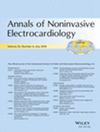The Effect of Sacubitril/Valsartan on Supraventricular and Ventricular Arrhythmias in Patients With Heart Failure
Abstract
Background
Patients with heart failure with reduced ejection fraction (HFrEF) frequently experience electrical disturbances, such as ventricular or atrial fibrillation (AF). Sacubitril/Valsartan (SV) therapy has been linked to lower rates of mortality, ventricular tachycardia (VT), and ventricular fibrillation (VF), with decreased reliance on implantable cardioverter-defibrillator (ICD) therapy. However, studies on the antiarrhythmic effects of SV in patients with ICD or cardiac resynchronization therapy defibrillator (CRT-D) devices are limited. This study aimed to evaluate the impact of SV therapy on antiarrhythmic pacing, defibrillation shock occurrences, and the burden of ventricular arrhythmias in patients with HFrEF who have ICD or CRT-D devices.
Method
This study was conducted at a HF outpatient clinic involving patients with HFrEF treated with SV. Primary outcomes included the incidence of VT, VF, non-sustained VT (NsVT), supraventricular tachycardia (SVT), and related interventions such as antiarrhythmic pacing (ATP) and defibrillation shocks.
Result
A total of 181 HFrEF patients completed at least 12 months of follow-up, with a mean age of 63.39 ± 12 years; 36.5% were male, and 60.8% had an ICD. Device interrogation revealed a significant reduction in VF incidents (7 vs. 15, p = 0.025) and a decrease in the combined outcome of VT and VF (17 vs. 24, p = 0.047). The need for ICD interventions such as ATP and shocks also significantly decreased following the initiation of SV therapy (10 vs. 24, p = 0.012).
Conclusion
SV therapy significantly reduces the incidence of cardiac arrhythmias, particularly VT and VF, while decreasing the need for clinical interventions related to implanted devices.


 求助内容:
求助内容: 应助结果提醒方式:
应助结果提醒方式:


